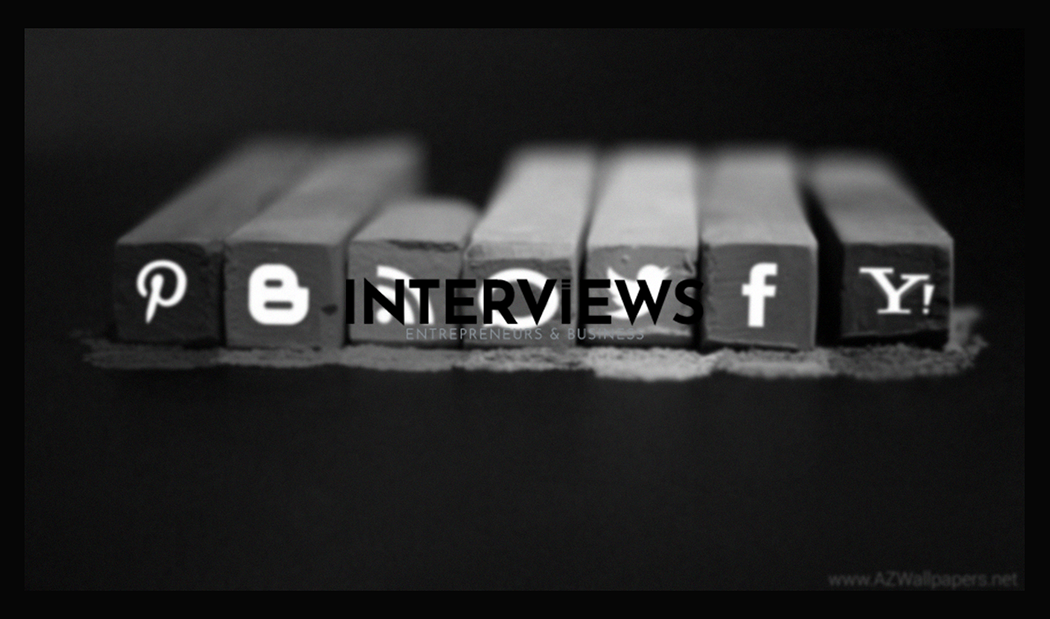So, You Want to Build the Next Big Social Media Thing? Buckle Up!
Do you dream of creating the next Facebook, Instagram, or TikTok? Platforms that engage everyone with endless scrolling and viral videos? You are not alone. But before jumping in, let’s discuss what it actually takes to create a social media site. It requires more than wishing and hoping for fame.
Creating a Social Media Site/Platform: It’s a Marathon, Not a Sprint
Building a social media platform needs more than just code. It is a strategic journey, like planning a road trip. You need a map, snacks, and maybe a helpful co-pilot. Here’s your roadmap:
Know Thy Audience: Research is Your Best Friend
First, consider who your users are. Identify your target audience needs. Are you aiming for Gen Z gamers? Food lovers snapping pictures of meals? Or birdwatchers sharing rare sightings? Research your target audience’s desires. What do they want that current platforms don’t provide? Niche is good, but knowing your niche is better.
Features that Stick: Interaction is Key
Social media is all about connection. You need to develop interaction features that keep users engaged. Look beyond just likes and comments. Think groups, forums, live streams, and collaborative content creation. Facilitate connections, chats, and digital дружба (friendship in Russian).
Content is King (and Queen, and the Whole Royal Court)
You must empower users to create content. Provide features and tools that aid content creation. Think user-friendly options for images, videos, text, and possibly audio clips. The simpler it is to share, the more content will invade your platform, hopefully in a positive way.
Buzz, Buzz: The Power of Push Notifications
Today, attention spans are short. Add push notifications to keep users informed. Use gentle nudges for new messages, trending topics, or updates from favorite creators. But avoid overwhelming them; nobody likes a notification-happy app that demands attention constantly.
Mobile First (or Mobile Always)
Everybody has phones in their hands. You must focus on mobile responsiveness or make an app. A clunky desktop-only site? That’s like showing up with a horse at a race. Make it functional, mobile, and relevant.
Tech Talk: Hosting, Framework, Architecture, and All That Jazz
Let’s discuss some technical elements:
- Choosing a hosting: Where will your site live? Consider it renting digital land.
- Choosing a framework: This forms the base of your platform. Choose wisely as it influences performance.
- Creating an architecture: How will everything fit together? Plan the structure for smooth operation.
- Choosing CMS: A Content Management System makes managing content easier.
And don’t forget the basics like buying a domain name. Choose something catchy and easy to remember – your digital address matters!
Device-Agnostic: Play Well with Everyone
Your platform must work smoothly across devices and systems. Adapting the product ensures it looks good and operates on iPhones, Androids, tablets, and laptops. No one wants a site that seems outdated on various devices.
Fort Knox Security: Keeping the Bad Guys Out
Security is serious business. Ensure the security of the platform. Protect user data and privacy. Strong passwords, data encryption, and maybe even hiring a cybersecurity expert are essential.
Test, Tweak, Repeat: Maintenance is Forever
Building a social media site isn’t a one-time project. Maintenance and testing are continuous. Expect bugs, glitches, and constant updates. Think of it as a digital garden that needs continual care. Frequent testing and iteration, as Bettermode suggests, are vital for lasting success.
Business Brain Time: More Than Just Likes and Shares
A social media site is also a business. Let’s don our business hats (stylish, of course).
Niche it or Lose it: Define Your Territory
You must Define Your Niche and Target Audience. Trying to please everyone ends in failure. Target a specific niche – pet lovers, bookworms, travel fans – and address their unique needs. A focused approach helps you stand out in social media.
Market Research: Are People Actually Interested?
Before spending your life savings, Conduct Market Research. Is there demand for your build? Do competitors exist? What are their strengths and weaknesses? Don’t assume brilliance; prove it.
Business Plan 101: The Blueprint for Success
You’ll need a strong Creating a Business Plan. Consider it your startup manual. Key components include:
- Create a clear vision and mission: What’s your goal? What’s the problem being solved?
- Outline your target market: Who do you want to reach? Be precise.
- Determine your money-making strategy: How will you earn? Ads? Subscriptions? (Maybe skip the virtual unicorn stickers).
Design Magic: UI/UX is Not Optional
Design User Interface (UI) and User Experience (UX): Aesthetic meets functionality here. Your platform must be visually appealing and user-friendly. Nobody wants to navigate a digital maze designed by a grumpy coder.
Tech Stack Decoded: Choosing Your Weapons Wisely
Choose the Right Technology Stack: This includes the technologies for building your platform. Consider programming languages, databases, and frameworks carefully; they affect speed and scalability.
Key Features: The Heart of Your Platform
Develop Key Features: What will set your platform apart? Brainstorm core functionalities that will draw in users. Go beyond the basics – define your secret sauce.
Security Blanket: Implement it Early
Implement Security Measures: This cannot be stressed enough. Security isn’t optional; it’s foundational. Safeguard user data from day one.
Test, Iterate, Repeat (Again): The Cycle of Improvement
Test and Iterate: Start with a Minimum Viable Product (MVP), gather feedback, and make improvements. View your platform as a living entity needing nurturing and refinement.
Community Building: It Takes a Village (or a Digital Tribe)
Building a Community is essential. It’s about creating not just a platform but an engaging ecosystem. Here’s how:
- Promote your platform: Spread the word! Use social media marketing, influencer partnerships, word of mouth – utilize all tools available.
- Engage with users: Be responsive, listen to feedback, participate in discussions. Show them you care (because you should).
- Cultivate community spirit: Build an inclusive environment where users feel they belong. Think online events, contests, and features that boost interaction.
Expert Help: Don’t Be a Lone Wolf
If you aren’t tech-savvy, you’ll need assistance. To build a social media platform, seek expertise in web and app development. Development firms will be your allies. The work of web and app developers is critical in bringing ideas to life. Nimble AppGenie highlights their importance in executing social media ideas.
From concept to final deployment, their expertise ensures an enjoyable user experience from day one.
The Price Tag: How Much Will This Social Media Dream Cost?
Now let’s discuss finances. Building a social media site costs money. It can be a big investment. Here’s the breakdown of the Costs Associated with
Building and Maintaining a Social Media Site/App:
Development Costs: From Basic to Baller
- Initial development cost: Expect to pay $25,000 – $50,000. The total could range from $25,000 to $50,000. Complexity impacts the cost too.
- Cost to build a basic social network app: About $37,500. Focus on essential features.
- Cost to develop an app like TikTok: Expect $50,000 – $100,000. Extra features and algorithms add to the cost.
Here’s a general cost breakdown by complexity:
- Basic Social Network App: $30,000 and $60,000.
- Medium Complexity: $80,000 to $150,000.
- Highly Complex App: $150,000 to $500,000 or more. Costs rise when aiming for a top-tier app.
Ongoing Costs: The Never-Ending Story
- Server costs: $500 – $20,000+ per month. This depends on users and data volume. Imagine it like rent for your online space.
- Marketing and user acquisition costs: $10,000 – $100,000+. Attracting users requires strong marketing efforts.
- Maintenance and updates: Regular costs exist for fixes, patches, and updates. This is an ongoing task.
- App maintenance costs: Allocate around 15%-20% of total build cost each year for maintenance. Ignoring it can lead to issues.
Time is Money (and Social Media Development Takes Time)
Patience is required. Building a social media site isn’t quick. The Development process can be lengthy. As Vlad Koval notes, it’s a demanding process.
- Basic app with essential features: Expect 3-6 months of development. Building takes time.
- From concept to launch could take over a year. Plan for a lengthy timeline.
Money, Money, Money: Monetization Strategies
How can you make money from your social media site? Here are common Monetization Strategies for Social Media Sites/Platforms:
Advertising: The Old Faithful
Advertising: Social networks gain income through ads. Display ads, sponsored posts, and targeted ads are options. Avoid overwhelming users with too many ads.
Content is Still King (and Needs Rules)
A solid content strategy matters. Posting random things won’t work. Here are key rules for your Content Strategy & Rules for Social Media:
The 30/60/10 Principle: Balance is Key
This principle emphasizes a mixed approach:
- 30% Owned Content: Your brand should own 30% of content – original posts, company news, etc.
- 60% Curated Content: 60% should involve shared content – relevant articles, industry updates, and user content.
- 10% Self-Promotion with Call-to-Action: The last 10% should promote your products with calls to action – announcements, offers, etc.
The 80/20 Rule: Inform, Entertain, Then Promote (Gently)
The 80/20 Rule suggests 80% of posts should inform or entertain, while only 20% should promote. Prioritize value over promotion.
The Golden Ratio: Another Content Recipe
Similar to the 30/60/10 rule, The ratios are 30% owned content, 60% curated content, and 10% promotional content. Choose a ratio that fits your brand.
Social Media Giants: Examples to Learn From (or Compete With)
Need ideas? Here are some Examples of Social Media Platforms you might know:
- Meta’s Facebook: The classic social network.
- Instagram: A visual platform for storytelling.
- X (formerly Twitter): The place for updates and conversations.
- YouTube: A platform where video content rules.
Cash in on Connections: Earning Potential on Social Media
Social media has potential for income beyond selfies. Here’s an overview of Earning Potentials on Social Media Platforms, especially for influencers:
- Micro-influencers (10,000-50,000 followers): Earn $100-$500 per post.
- Mid-tier influencers (50,000-500,000 followers): Earn $500-$5,000 per post.
- Beginner influencers with affiliate links: Potential income is $1,000 per month.
- Advanced influencers with affiliate links: Can reach six-figure earnings.
- TikTok Creator Fund: Payments around $0.02 – $0.04 per 1,000 views. You need many views for significant earnings.
Beware the Pitfalls: Social Media Startup Survival Guide
Not every social media idea succeeds. Be aware of Potential Pitfalls & Failures:
- Excessive development costs: Building your social platform may lead to high costs. Budget effectively to avoid overspending.
- Ignoring changing laws and policies: Many startups fail by not staying updated with regulations. Compliance is essential.
- Features: Lack of strong features can lead to failure. Factors like funding challenges and feasibility affect success. Focus on making core features appealing.
Plan B: Social Media Not Your Thing? Consider This
If creating a large social media platform seems daunting, don’t worry! Here are some Alternatives if you don’t want to create a Social Media:
Having a Website: The Classic Approach
A Website is still a strong choice. It’s your digital base. Your website can be a resource hub, while Instagram can showcase your brand and attract users. Combining these might be effective.
This is the journey of creating a social media site. It’s challenging but rewarding. Remember to research and plan wisely while enjoying the ride. Good luck creating your platform!





